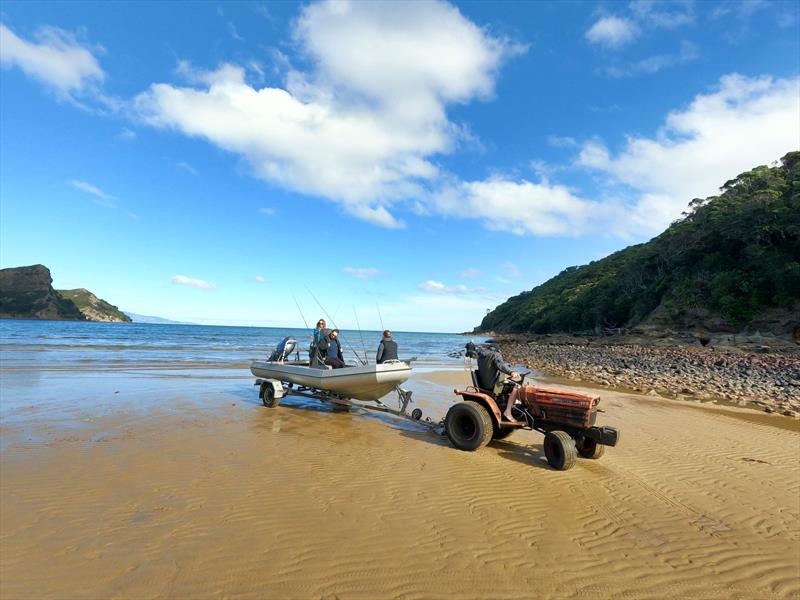
Marine Biosecurity: Local fisherman first to detect invasive seaweed at Aotea Great Barrier Island
by Clean Below? Good to Go 3 Dec 2021 12:19 NZDT
2 December 2021

Unusually low tides enabled Jack to spot and photograph Caulerpa at Blind Bay. If he'd arrived a little later or earlier he may have missed it © Jack Warden
When Jack Warden took a moment to photograph some unusual-looking seaweed during a fishing trip with his father, he didn’t know that he was discovering an invasive marine pest for the first time in New Zealand.
“I was home for my Dad’s birthday,” recalls Jack of the day he became the first person to discover Caulerpa brachypus in the waters of Blind Bay, Aotea Great Barrier Island.
“We were going fishing, and the tide was as low as it gets on that coast. We launched the boat from a tractor next to the rocks, and because the tide was so low, the seaweed was almost out of the water.”
Jack is a senior ecologist (of the terrestrial kind), and in the habit of photographing his findings and submitting them to the online community on iNaturalist, where citizens and scientists alike can submit creatures they find for identification by experts.
Jack didn’t know its significance at that point, but he knew it was a species he hadn’t encountered before and so uploaded the images and waited to see what the scientific community identified it as.
Very quickly Sergio Diaz Martinez from the National Autonomous University of Mexico – a Caulerpa expert who had previously worked with NIWA in Wellington – identified it to genus level and tagged a local colleague, who contacted Jack via the iNaturalist app. As a result, Biosecurity New Zealand was notified of the find and asked that he urgently take a sample.
With the tides now back to normal, getting a sample with just a snorkel and in turbulent weather was easier said than done, so Biosecurity New Zealand despatched divers to the scene to assist. Samples were soon sent to the Marine Invasive Taxonomic Service at NIWA who identified the Caulerpa to species level based upon morphology and genetics.
The response to confirmation that it was Caulerpa was swift: Biosecurity New Zealand initiated a formal incursion response with Ngati Rehua Ngati Wai ki Aotea, Auckland Council and the Department of Conservation. The species was listed as an Unwanted Organism under the Biosecurity Act, and to minimise its spread Biosecurity New Zealand placed a Controlled Area Notice (CAN) on Blind Bay and Tryphena Harbourat the same time as Ngati Rehua Ngati Wai ki Aotea imposed a rahui on the areas.
Caulerpa was subsequently found in Whangaparapara Harbour and controls are now in place over this bay as well.
Biosecurity New Zealand’s Response Controller David Yard says that while new species are detected every day on iNaturalist, this one is significant because it is an invasive species not previously found in New Zealand.
“Its source is currently unknown, but it may have been introduced on fishing or boating equipment. The sooner we find exotic new organisms, the better our chance of doing something about it. Detecting this when Jack did may have stopped it spreading further,” Mr Yard says.
The irony is that the controls mean that Jack, (pictured left filleting his catch on the day he discovered Caulerpa) when he visits his father (pictured right), can’t go fishing from his closest bay.
“We have caught a 20 pound snapper right where we found the Caulerpa,” says Jack. “A lot of people fish on the beach where the seaweed grows. The flow on effects it could have on inshore fishing and the potential impact it could have if it destroys the habitat are potentially huge, and long term.”
Find out more about Caulerpa and the Controlled Area Notice by using this link.